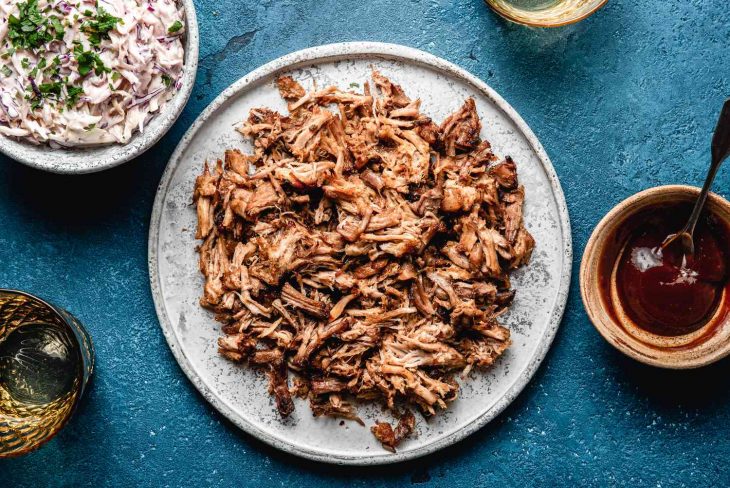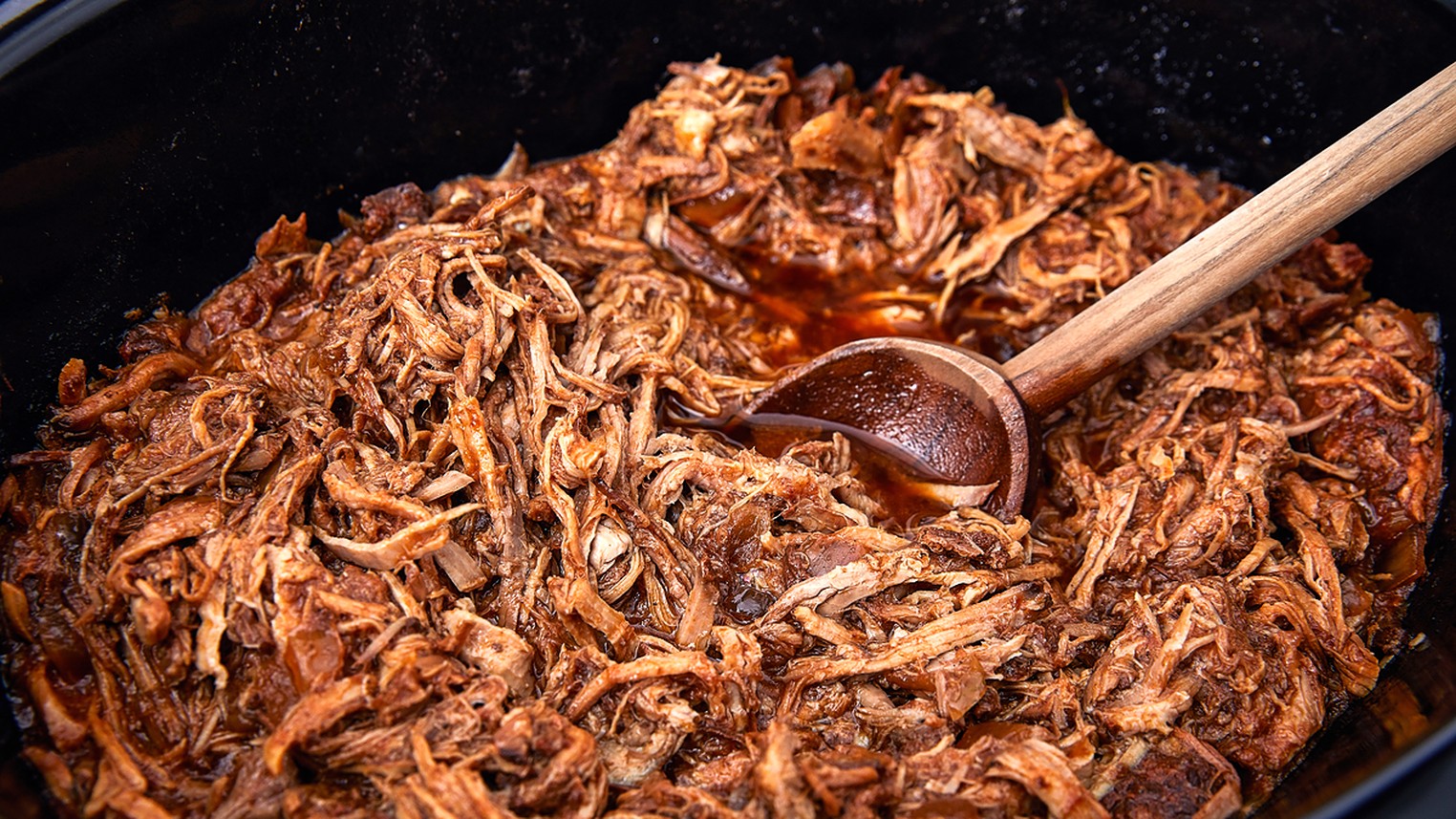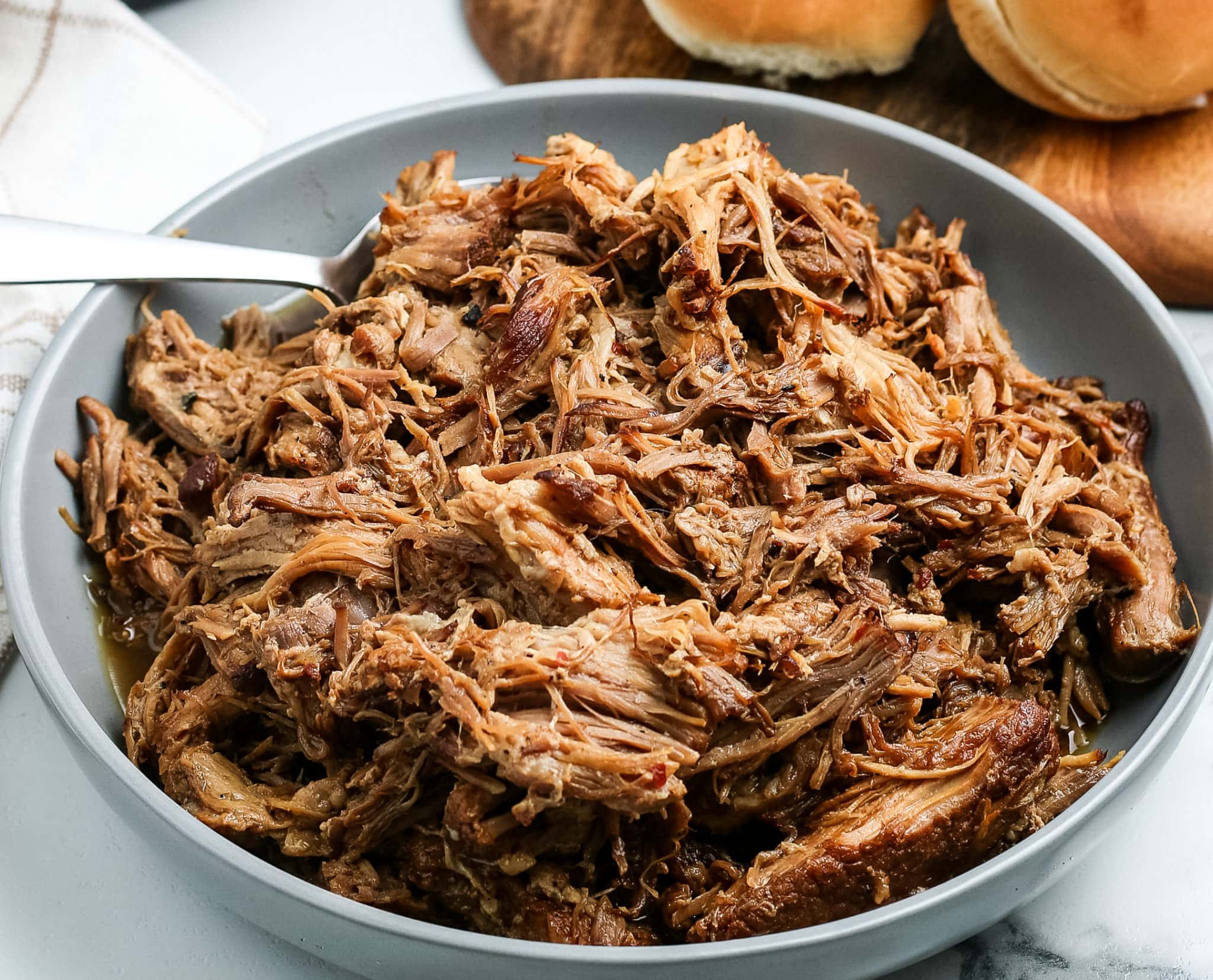
Pulled pork is a beloved dish that has become a staple in many cuisines around the world. Known for its tender, flavorful meat, pulled pork is a crowd-pleaser at barbecues, picnics, and family gatherings. But what about its nutritional profile? In this article, we will explore 20 fascinating nutritional facts about pulled pork, uncovering its protein content, vitamins, and minerals, and how it fits into a balanced diet. So, let’s dig into the delicious and nutritious world of pulled pork!
Protein Powerhouse
Pulled pork is a fantastic source of protein, which is essential for building and repairing tissues, supporting the immune system, and aiding in enzyme production. A 3-ounce (85 grams) serving of pulled pork provides approximately 22 grams of high-quality protein.
Rich in Essential Amino Acids
Pulled pork contains all nine essential amino acids, making it a complete protein source. These amino acids are vital for various bodily functions, such as muscle growth, hormone production, and neurotransmitter synthesis.
A Good Source of Vitamins
Pulled pork is packed with essential vitamins, including B vitamins such as thiamine, riboflavin, niacin, and vitamin B12. These vitamins play a crucial role in energy production, metabolism, and maintaining a healthy nervous system.
Mineral Boost
Pulled pork provides essential minerals like zinc, phosphorus, selenium, and iron. Zinc supports immune function, phosphorus contributes to bone health, selenium acts as an antioxidant, and iron is crucial for oxygen transport in the body.
Heart-Healthy Fats
While pork does contain fat, pulled pork can be prepared with lean cuts, reducing the saturated fat content. Opting for lean cuts and trimming visible fat can help make pulled pork a heart-healthy choice.

Source of Energy
Pulled pork provides a good source of energy, thanks to its calorie content. A 3-ounce serving of pulled pork typically contains around 250-300 calories, depending on the cooking method and seasonings used.
Low Carb Option
For individuals following low-carb or ketogenic diets, pulled pork can be a suitable choice. While it contains some carbohydrates, the amount is minimal compared to other dishes. However, be cautious with added sauces or sugary marinades that may increase the carb content.
Gluten-Free Delight
Pulled pork is naturally gluten-free, making it an excellent option for individuals with gluten sensitivities or those following a gluten-free diet. It can be enjoyed as a main dish, sandwich filling, or in various gluten-free recipes.
Versatility in Cooking Styles
Pulled pork can be prepared in various cooking styles, offering a range of flavors and textures. From slow-cooked barbecue pulled pork to tangy Mexican carnitas, the versatility of pulled pork allows for diverse culinary experiences.

Sodium Considerations
One aspect to consider with pulled pork is its sodium content, particularly if prepared with added sauces or seasonings. Opting for homemade sauces or reducing the amount of added salt can help control sodium intake. It is important to be mindful of overall sodium consumption, especially for individuals with certain health conditions.
Flavorful with Spices
Pulled pork shines in flavor, thanks to the spices and seasonings used during preparation. Common spices include paprika, cumin, garlic powder, and chili powder, which not only enhance the taste but also add a boost of antioxidants and phytochemicals to the dish.
Smoke and Barbecue
The smoky flavor associated with pulled pork comes from slow cooking over wood smoke or using smoke-infused seasonings. This process adds depth to the flavor profile and enhances the overall sensory experience of enjoying pulled pork.

The Art of Tenderizing
Pulled pork’s tenderness is achieved through a slow cooking process that breaks down the collagen and connective tissues in the meat. This results in moist, melt-in-your-mouth pork that is easy to shred or “pull” apart.
Regional Variations
Pulled pork has regional variations in terms of preparation and flavors. For example, in the southern United States, pulled pork is often served with a tangy vinegar-based sauce, while in the Carolinas, it is enjoyed with a mustard-based sauce. Exploring these regional variations can add excitement to your culinary journey.
Pairing with Healthy Sides
Pulled pork can be complemented with a variety of healthy sides to create a well-rounded meal. Opt for fresh salads, roasted vegetables, whole-grain bread, or fiber-rich beans to add nutrition and balance to your plate.
Mindful Portion Control
While pulled pork can be a nutritious choice, portion control is key. Enjoying a moderate serving size allows you to savor the flavors while ensuring you consume an appropriate amount of calories, protein, and other nutrients.
Homemade vs. Store-Bought
Preparing pulled pork at home gives you control over the ingredients, cooking methods, and seasonings used. This allows you to customize the dish to suit your dietary preferences and make healthier choices. Store-bought options may contain additives, preservatives, or higher sodium levels, so reading labels is important.
Moderation and Dietary Considerations
As with any food, it is important to consider individual dietary needs and preferences. For individuals with specific health conditions or dietary restrictions, consulting with a healthcare professional or registered dietitian can help determine the best approach to incorporating pulled pork into their diet.

Balancing with a Variety of Proteins
While pulled pork can be a delicious protein option, it is beneficial to include a variety of protein sources in your diet. This ensures you receive a wide range of essential amino acids, vitamins, and minerals from different food sources.
Enjoyment and Moderation
Ultimately, pulled pork can be enjoyed as part of a balanced diet and a healthy lifestyle. Savoring this flavorful dish in moderation, paired with nutrient-dense sides and a variety of other healthy protein sources, contributes to a well-rounded approach to nutrition.
Conclusion
Pulled pork offers a delectable combination of flavor and nutrition, making it a versatile and appealing choice for many. With its high protein content, essential vitamins and minerals, and culinary flexibility, pulled pork can be enjoyed as part of a balanced diet. By being mindful of portion sizes, sodium levels, and preparation methods, pulled pork can be a delightful addition to your culinary repertoire.
Frequently Asked Questions (FAQs)
Can pulled pork be part of a healthy diet?
Yes, pulled pork can be part of a healthy diet when consumed in moderation and paired with nutrient-dense sides. Opting for lean cuts, homemade preparations, and controlling sodium levels can enhance its nutritional value.
Can pulled pork be enjoyed by individuals following a low-fat diet?
Pulled pork can be included in a low-fat diet by selecting lean cuts of pork and trimming visible fat. It is important to consider overall fat intake from other sources to maintain a balanced approach.
Is pulled pork suitable for individuals following a keto diet?
Pulled pork can be incorporated into a keto diet, as it is low in carbohydrates. However, be mindful of added sugars in sauces or marinades and select keto-friendly sides to maintain ketosis.
How can I make pulled pork healthier at home?
To make pulled pork healthier at home, choose lean cuts of pork, trim visible fat, and control the amount of added salt. Opt for homemade sauces using natural ingredients and minimize the use of added sugars.
Is pulled pork safe to eat for individuals with certain dietary restrictions?
Pulled pork can be enjoyed by individuals with certain dietary restrictions, depending on their specific needs. For individuals with health conditions or dietary restrictions, consulting with a healthcare professional or registered dietitian is recommended to ensure it aligns with their dietary guidelines.
Was this page helpful?
Our commitment to delivering trustworthy and engaging content is at the heart of what we do. Each fact on our site is contributed by real users like you, bringing a wealth of diverse insights and information. To ensure the highest standards of accuracy and reliability, our dedicated editors meticulously review each submission. This process guarantees that the facts we share are not only fascinating but also credible. Trust in our commitment to quality and authenticity as you explore and learn with us.
